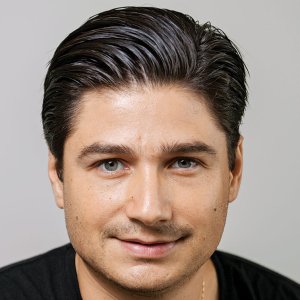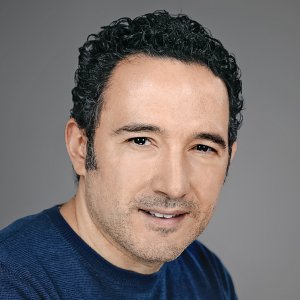How P4 Medicine Will Transform Healthcare and Society, Part 1

STORY INLINE POST
(This is Part 1 of a two-part article on the 4 Ps in P4 Medicine and its impact on healthcare and society.)
P4 medicine, also known as predictive, comprehensive, precision and systems medicine, treats patients differently from the medical care we were used to, in which the health professional sought to "repair" the ailment that was presented for the moment, to later move on to the next condition, which is "repaired" once again. This cycle is repeated over and over again. On the other hand, P4 medicine is considered the basis of precision medicine, and its purpose is to be Participatory, Personalized, Predictive and Preventive (some even consider that there should be a fifth P for the term "Precise" because the degree of customization it acquires is increasing). In this type of medicine, the patient is included in healthcare and no longer depends exclusively on the health professional, which allows for longer-lasting good health.
A term that is scarcely known is systems medicine. This concept is the application of systems biology in the health sector, a science that seeks to understand the interactions of the multiple parts that make up a system to treat a specific problem. Thanks to technological advances, it is easier for us to get involved in our healthcare by having devices that measure our progress, so that progress being tangible, there is a motivation not to lose the path traveled.
This and more is P4 medicine, the medicine of the 21st century that will transform the health sector and even society.

How Systems Biology and Medicine Contributed to the Emergence of P4 Medicine
To begin with, systems biology would not exist without "reductionist" medicine, which individually studies the simplest parts that make up a more complex whole, and the position of this approach considers that we are only capable of accessing a deeper knowledge if we start from the smallest. On the contrary, systems biology studies an organism and the interactions between the different parts of which it is composed (DNA, RNA, proteins, the environment in which it develops). This is a "holistic" approach, which ensures that the properties of a system cannot be seen starting from the parts that compose them, since when interacting, if one of the parts is affected, this small alteration could affect the entire system (Flores et al., 2013).
To explain the above we can use the metaphor of the elephant. In an Indian parable, at the request of a king, a group of blindfolded men had to touch an elephant, and then answer what and how it was. Those who touched a leg said it was a column, those who touched an ear thought it was a fan, those who touched the trunk concluded it was a pipe, and those who touched the stomach said it was a wall. None considered taking into account what the rest said and as a result they could not get a full answer. This is how the reductionist approach works. It is not wrong, all men were right from their point of view; however, holism is able to offer us a more complete answer when analyzing systems and their properties as a whole. Contrary to what we might think, reductionism and holism are not positions that are in conflict, and one of the reasons is that the holistic position would not have arisen without the knowledge obtained thanks to the reductionist approach.
Systems biology is an area that has input from, for example: physicians, biologists, biochemists, physicists, Earth and computer science experts, mathematicians, and engineers; and it is that thanks to teamwork it is possible to predict and control the activity of biological systems (Flores et al., 2013).
Systems medicine treats patients comprehensively; that is, it considers their physical and mental state to decipher the origin of the condition that the patient is suffering, making use of high-performance technologies, such as DNA and RNA sequencing, to analyze the data obtained and study the interactions between genetic composition, the impact of the environment and habits. The accuracy of the predictions that are made from the new computational models, which is the use of computers to simulate systems and that is designed from the variables that compose them, the key to its success is not due only to the creation of new and better technologies to carry out simulations, but also to the exponential increase in valuable information, such as the genome, blood studies, lifestyle data, proteome, transcriptome and the intestinal microbiota (Flores et al ., 2013).
The foundations of systems medicine focus on the collection and interpretation of data and a response according to the results will be able to better delimit the disease suffered and quantify health:
- State-of-the-art technologies to generate data from different perspectives of each person's experience of health and illness.
- A digital infrastructure that streamlines communication between scientific institutions, participating clinics and patients.
- Personalized data clouds provide information on genetic and phenotypic characteristics, medical history, demographic data and other sociometric data (measures the degree of integration of each individual within a group).
- The new data analysis techniques and technologies arising from obtaining experimentation from data.
- Systems biology models to understand the unique health status of each individual in terms of dynamic network states that can be manipulated using cost-effective strategies.
At nutriADN functional medicine clinics (www.nutriadn.com), P4 medicine is practiced and its reach covers all of Mexico and some countries in Latin America. You can learn more on our website about the innovative laboratory analysis, consultations, programs and seminars for health professionals that encourages them to apply this “new generation” medical practice in their consultation. If you would like to partner with us, you can learn more at https://www.nutriadn.com/partners.
References
Cardinal-Fernández, P., Nin, N., Ruiz-Cabello, J., & Lorente, J. A. (2014). Systems medicine: a new vision of clinical practice. Archives of Bronchopulmonology, 50(10), 444–451.
Chung, H. C., Keiller, D. R., Roberts, J. D., & Gordon, D. A. (2021). Do exercise-associated genes explain phenotypic variance in the three components of fitness? a systematic review & meta-analysis. PlOS one, 16(10), e0249501.
Flores, M., Glusman, G., Brogaard, K., Price, N. D., & Hood, L. (2013). P4 medicine: how systems medicine will transform the healthcare sector and society. Personalized Medicine, 10(6), 565-576.
Moreno-Carriles, R.M. (2018). Big data, but what is it? Angiology. doi:10.1016/j.angio.2018.05.001
Sobradillo, P., Pozo, F., & Agustí, Á. (2011). Medicine P4: the future just around the corner
























